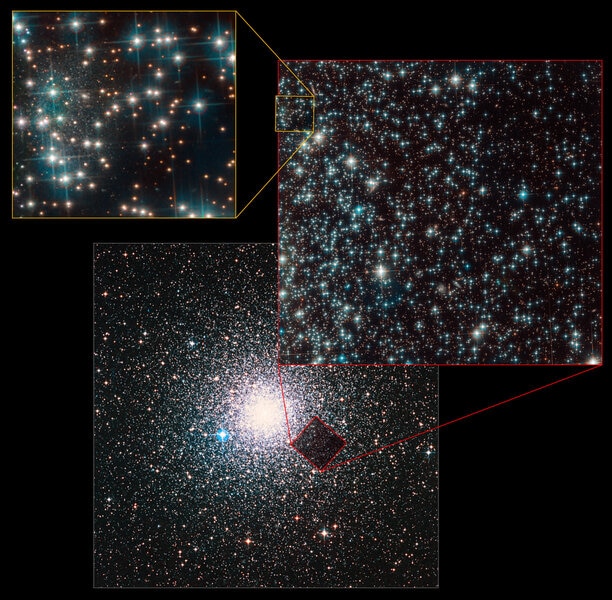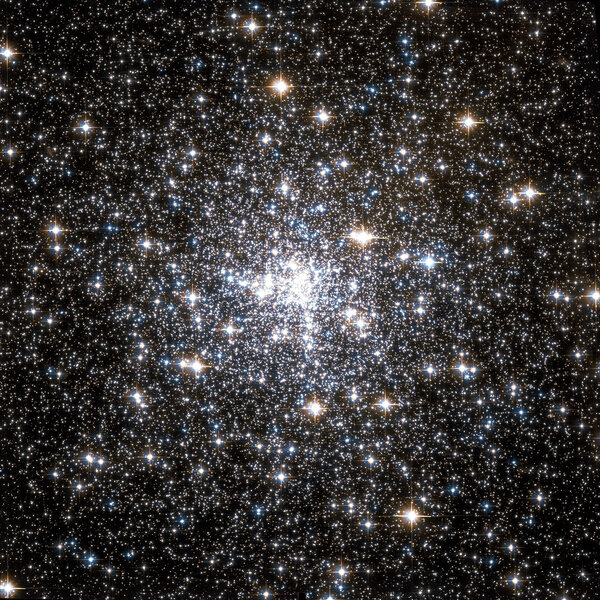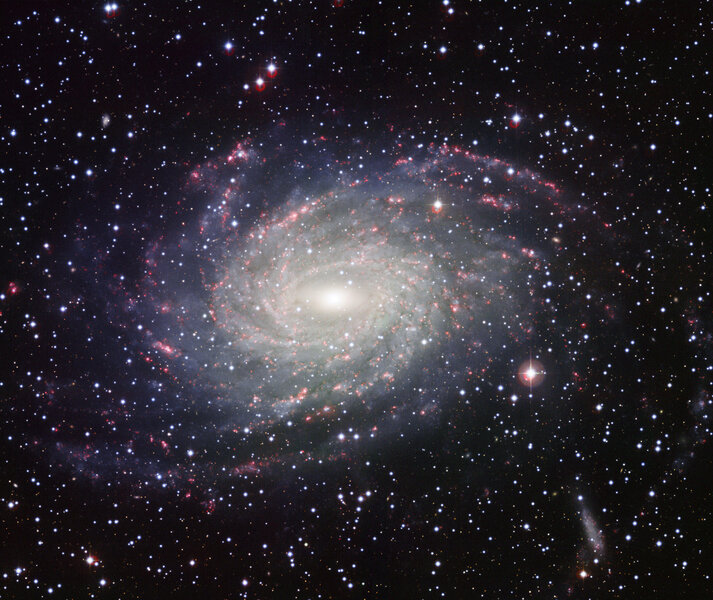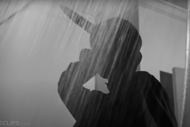Create a free profile to get unlimited access to exclusive videos, sweepstakes, and more!
Astronomers accidentally discover a nearby galaxy in a Hubble image!
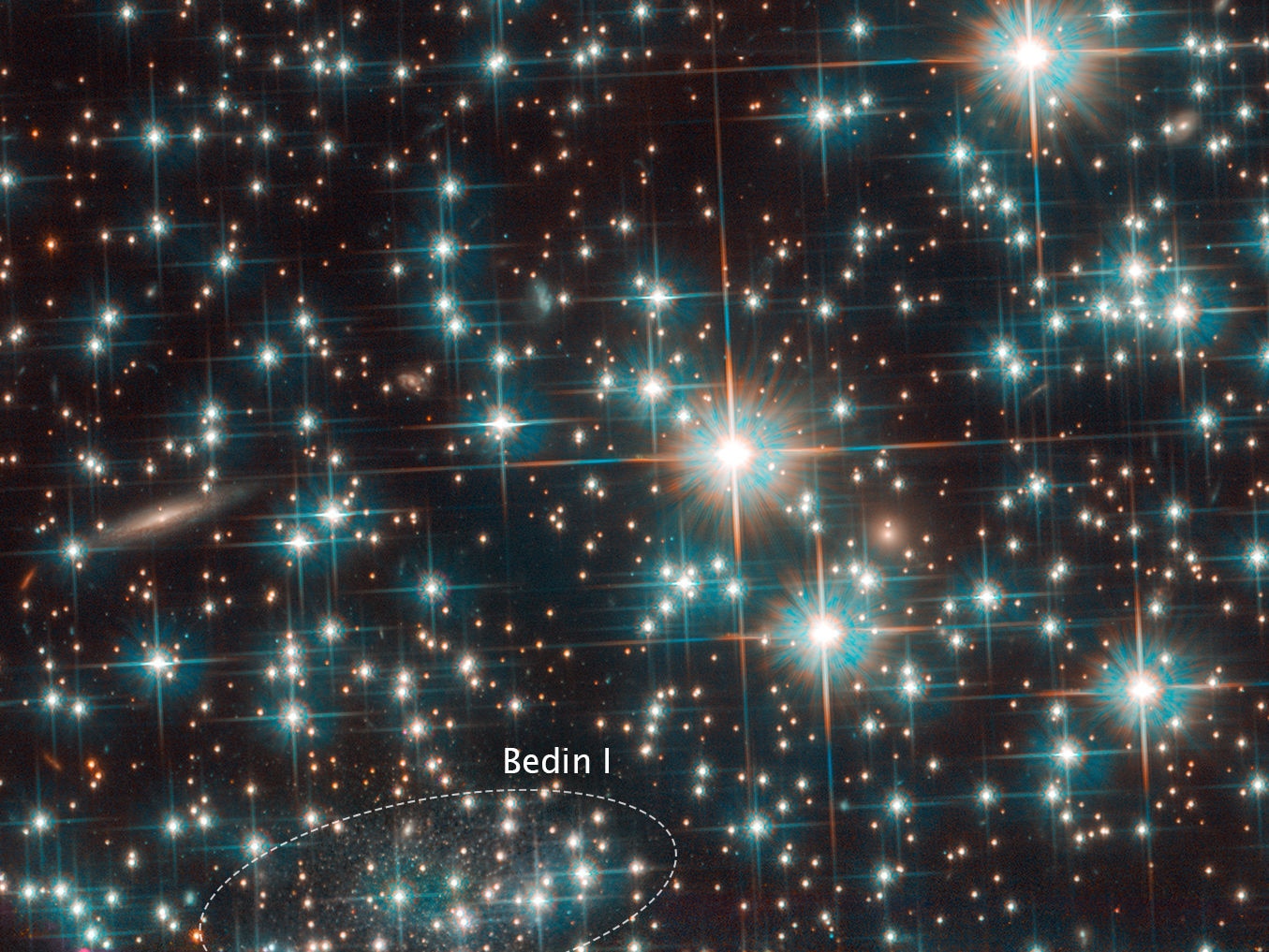
The Universe is filled with stuff.
Stars, gas, clusters, galaxies… even though they're separated by vast distances in space, we don’t directly notice that distance when we look up at the sky because that third dimension is compressed. Something very far away can appear to be right next to something much closer to us, like looking out a window and seeing a nearby tree apparently right next to a distant mountain.
There's so much stuff out there, though, that coincidental superposition happens a lot. We just don't see it often in astronomical photos because for the most part these objects are so far away they're really, really faint, so they don't show up in the pictures unless the telescope is big, the camera sensitive, and the exposure time long.
Hey, Hubble's kinda big, has sensitive cameras, and can take long exposures. So yeah, it sees these sorts of things all the time. Many shots from Hubble show nearby stars, distant galaxies and everything in-between in a single image.
Well, not everything. Even nearby objects can be dim if they're intrinsically faint… and that brings me to an observation that I simply love.
At the bottom of that image is a ground-based image of the globular cluster NGC 6752, a roughly spherical collection of over 100,000 stars all orbiting each other. As a unit they orbit our Milky Way and are about 13,000 light years from Earth.
Astronomers pointed Hubble at NGC 6752 for a long, long time, taking incredibly deep exposures of it to see the very faintest stars they could, so they can better understand the population of faint stars residing there. The science behind this is interesting and important, but it yielded an extra dividend: while they were examining the Hubble images taken near the core, they found a small clutch of faint stars all together in one spot.
As you can see in the image, most of the stars in NGC 6752 are brighter and evenly spread around, so these being dimmer and clumped together meant they were looking at something different: An extremely faint galaxy, far in the background of the globular cluster!
But how far? Given that individual stars can be seen in the galaxy — which the astronomers named Bedin I, after the lead investigator on the team, Luigi Bedin — it can’t be too far away, but the exact distance is important to figure out. Analyzing the stars in this galaxy is really hard, though, because for one thing it's incredibly dim. Their combined light brings this galaxy to a magnitude of about 20 — the faintest star you can see with your naked eye is 400,000 times brighter. And that's for the whole galaxy; the individual stars are hundreds of times fainter.
Worse, it's sitting right near the core of NGC 6752 (well, from our point of view), so there are lots of far brighter stars sitting near and even on top of it, contaminating the sample. And finally, as bad luck would have it, the galaxy is near the edge of the image’s field of view. The technique used to combine all the observations into one super-deep image tends to make observations near the edge shallower, so we don't see the faintest stuff in the galaxy as well as if it were near the center of the field of view.
Still, enough individual stars are visible for the astronomers to examine them carefully. They were able to find quite a few red giant stars, which are great benchmarks: The very brightest of these old, dying stars tend to always give off the same amount of light, so by measuring how bright they appear we can measure their distance.
The astronomers determined that Bedin I is about 28 million light years away. That's close, relatively speaking, though well outside the Local Group of galaxies which holds our Milky Way, Andromeda, and a couple of dozen other galaxies. Given how bright it is, that makes Bedin I a dwarf galaxy for sure. It's about 2,700 x 1,100 light years in size, which is tiny — the Milky Way is 100,000 light years across!
But this gets better. Looking at the colors of the stars, the astronomers found that the stellar population is old, and I mean old: something like 13 billion years old, almost as old as the Universe itself! This galaxy formed right after the cosmos did, made a bunch of stars right away, then… stopped. It doesn't appear to have any gas or dust left in it, so it doesn't have the materials needed to make more stars.
That makes Bedin I a dwarf spheroidal galaxy — a relic galaxy, a fossil of truly ancient times. It also appears to be isolated, not near any other galaxies, so it's likely to have been untouched since it formed eons upon eons ago. It does appear to be in the same region of sky and at about the same distance as the big spiral NGC 6744 (which coincidentally, I wrote about just a few months ago), but even then they're separated by at least two million light years, a huge distance (Andromeda is about that far from the Milky Way), so even then it looks very likely that Bedin I is quite isolated.
What a great discovery! This is probably the least luminous galaxy every seen at such a distance; in fact second place is held by a galaxy much, much closer to us. Intrinsically faint galaxies are incredibly difficult to detect past about 13 million light years, so Bedin I is a treasure at more than twice that distance. We don't have many examples of these dwarf spheroidal galaxies because they're so hard to detect, so this one can help astronomers understand how they form, how they've lived, and what this means for bigger galaxies like ours (which grew to their present huge size in part due to gobbling down dozens of smaller galaxies like this one).
Like I said, I love this. When I worked on Hubble one of my favorite self-imposed tasks was looking at all the images we got to see if anything interesting showed up in the background. I found a lot of cool stuff (including a planetary nebula in a nearby galaxy that we got enough info on to publish a short paper), but nothing as important as this.
In astronomy, and really any field of science, you need the right tools, the right data, the right brains behind the analysis. And I'm tempted to say you also need luck… but this isn't luck. It's probability. What Bedin I is telling us is that there are a lot of these galaxies out there, and the more we look, the more we'll find.
